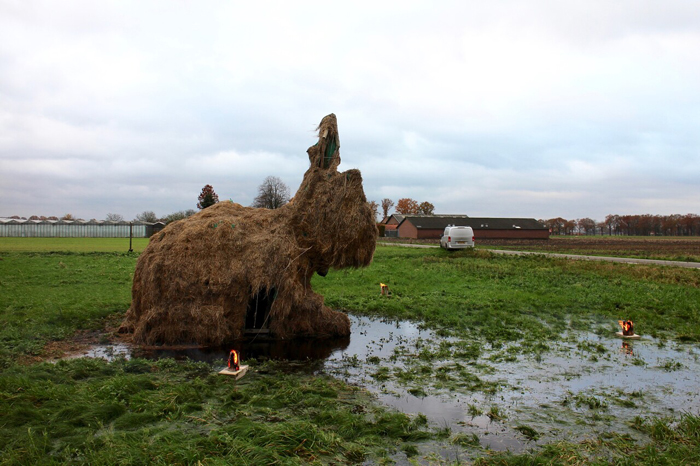Press Release
Artists have long ignored the impact of humans on nature, maintaining a romantic view of our environment. These days, however, many artists are reflecting on current changes, pollution and climate change. Veranderland shows the transformation of the landscape in art over a period of 200 years. Starting with the views of the countryside by, among others: Vincent van Gogh, Henriëtte Ronner-

International Archives 2nd half of 2024
Veranderland
Het Noordbrabants Museum, HT’s Hertogenbosch (The Netherlands)
06.07 - 27.10.2024

The new film The Fen-
There were plans to start a pharmaceutical rabbit farm in this area. Van Lieshout spoke to farmers, environmentalists and residents. A disarming narrative unfolds that takes the viewer into the issues of the modern-
In his work, Van Lieshout raises contemporary socio-
David Claerbout shows the destructive side of nature in his work Wildfire (Meditation on Fire), 2019–20. Our biological programming causes us to instinctively avoid fire when it cannot be contained, as in the case of a wildfire. As such, a “meditation on fire” may sound contradictory. Inspired by research into the energy required to produce a digital “still life” of fire, a task likely to set the computer on fire, Wildfire confronts the biological with the digital. In his work, Claerbout explores notions of time and duration through video and digital photography. Trained in painting and drawing, he uses the manipulation of both moving and still images to disrupt the narrative with a timeline that oscillates between past and present.
Disney regarded civilization and technology as a threat to nature. Mastering Bambi, 2010, lacks the adorable main characters of the original film. This places the focus entirely on nature itself, leaving only the question of where human imagination now remains. Walt Disney’s 1942 classic animation film Bambi is well known for its distinct main characters—a variety of cute, anthropomorphic animals. However, an important but often overlooked protagonist in the movie is nature itself: the pristine wilderness as the main grid on which Disney structured his Bambi. Lukács & Broersen explore the intricate relationship between culture and nature, driven by their interest in media, mythology, music and technology. They interweave these elements with the politics of representing and appropriating nature, drawing from a wide range of mythological, art historical, scientific and cinematic sources to reflect the multifaceted references that shape the imagination and appropriation of landscapes and memory.
In All that is solid, 2024, by Semâ Bekirović, we see a giant piece of candy in nature, which Bekirović had approved by ecologists. Although the insects thoroughly enjoyed it, the work also has a serious undertone. It is a reference to using up the Earth: like the insects and this magic ball made of sugar, humans are undermining the planet.
The video recording Wool March, 2022, shows how Cynthia Hathaway also explores the relationship between humans, animals and the environment. For centuries, herds of sheep were commonplace; today they and their expertise are less a part of everyday life. Following the herd right through city centres evokes deep memory and offers a social and ecological critique of how modern life overlooks but requires their presence and other unheard voices.
Exhibition 06 July -

© ArtCatalyse International / Marika Prévosto 2024 All Rights Reserved
Erik van Lieshout, The Fen-
